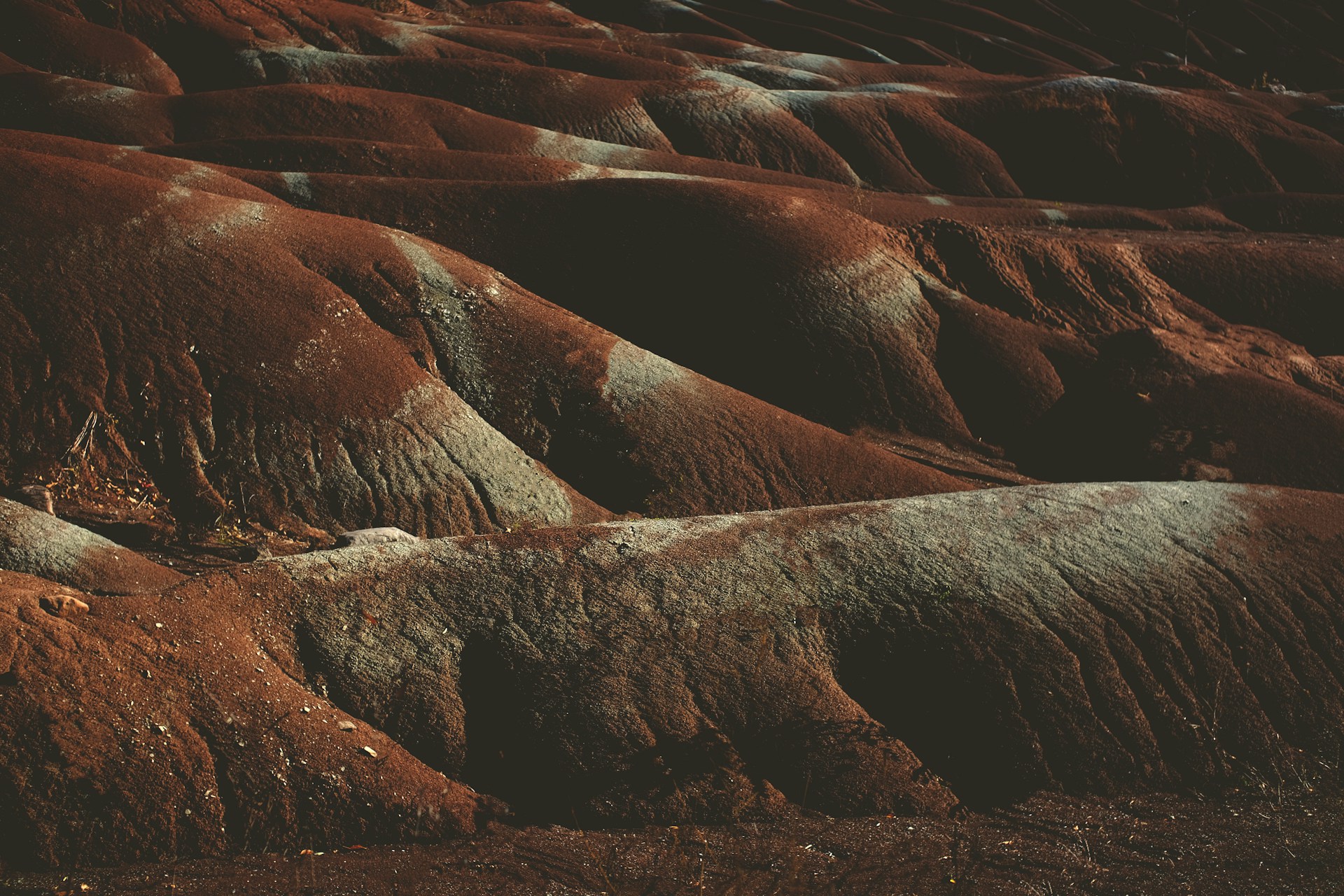

Question: What is the History of the Badlands in Caledon?
Answer: The history of the Badlands in Caledon dates back to the early 1900s when poor farming practices caused soil erosion, creating its distinct red hills and gullies.
The Cheltenham Badlands in Caledon – A Window to the Past
The Cheltenham Badlands, a dramatic landscape of red shale ridges and exposed earth, stands in stark contrast to the rolling farmlands that surround it. This unique geological formation not only offers stunning scenery but also holds a fascinating history, whispering tales of a bygone era. This post looks into the history of the Cheltenham Badlands, exploring its geological origins, the impact of human activity, and its transformation into a significant natural landmark. [ 1 ]
A Sea Transformed: The Geological Beginnings of the Badlands
The story of the Cheltenham Badlands begins millions of years ago, at the bottom of a vast ocean. Here, layers upon layers of sediment, including iron-rich clay, accumulated over time. These sediments eventually hardened into rock, forming the foundation of the future badlands.
-
Shifting Seas and Rising Land:
Around 450 million years ago, a series of geological events caused the ancient sea to recede. The land gradually rose, exposing the layers of rock that had been accumulating for millions of years. The iron-rich clay, now known as Queenston Shale, became a defining characteristic of the landscape. -
The Power of Erosion:
Over millennia, the exposed rock faced the relentless assault of wind, rain, and ice. These forces gradually eroded the softer layers, carving away at the landscape and creating the distinctive ridges and gullies that characterize the badlands today.
Follow this link for more information about realtors in Caledon
Related Article: What are Some Good Places to Go Cross-Country Skiing Near Caledon?
Previous Section: Where Can I See Fall Colours in Caledon?
The geological processes that shaped the Badlands were slow and deliberate, taking place over an immense timeframe. The result, however, is a landscape unlike any other in the region, a testament to the powerful forces that have sculpted the Earth’s surface.
From Ancient Seabed to Farmland: The Impact of Human Activity
While geological forces played the primary role in shaping the Cheltenham Badlands, human activity has also left its mark on this landscape. Here’s a glimpse into this period:
-
Arrival of Settlers:
European settlers arrived in the Caledon area in the early 19th century. Initially drawn to the region’s fertile lands, they began clearing forests and establishing farms. -
Unsustainable Practices:
Farming practices employed at the time often involved clear-cutting forests and intensive cultivation. This led to soil erosion, a significant factor in the further exposure of the underlying shale layers. Over time, the thin layer of topsoil that sustained agriculture was gradually stripped away, rendering some areas unsuitable for farming.
The unintended consequences of early farming practices significantly altered the landscape of the Caledon Badlands. The exposed shale, once buried beneath layers of soil and vegetation, became a prominent feature, contributing to the unique visual identity of the area.
From Eyesore to Ecological Treasure: The Transformation of the Badlands
The exposed shale of the Cheltenham Badlands was initially seen as an agricultural liability. However, a shift in perspective has led to its recognition as a valuable ecological treasure.
-
A Unique Ecosystem:
The harsh environment of the badlands provides a habitat for specialized plant and animal species that thrive in dry, exposed conditions. Certain wildflowers, cacti, and insects have adapted to this challenging environment, adding to the biodiversity of the region. -
Conservation Efforts:
The importance of the Cheltenham Badlands for ecological reasons has been increasingly recognized in recent decades. Conservation efforts have been implemented to protect the fragile ecosystem and prevent further erosion. The area was designated as a Natural Heritage Landmark in 1988, reflecting its significance for future generations.
The transformation of the Cheltenham Badlands from an agricultural challenge to a protected natural area highlights the evolving understanding of our relationship with the environment. Today, the badlands serve as a reminder of the consequences of unsustainable practices and the importance of preserving unique ecosystems.
A Legacy of Change: The Enduring Presence of the Caledon Badlands
The Cheltenham Badlands stand as a testament to change. From an ancient seabed to exposed shale, and from agricultural challenge to ecological treasure, the badlands have undergone a remarkable transformation.
The exposed rock formations not only offer a glimpse into the region’s geological past but also serve as a reminder of the impact humans have on the environment. Today, the Cheltenham Badlands stand as a valuable educational resource and a popular destination for hikers, photographers, and nature enthusiasts.
For more information please visit jenjewell.ca
A Final Thought
The Cheltenham Badlands offer more than just a scenic vista. They are a window to the past, a canvas painted by geological forces and human activity. So, the next time you explore this unique landscape, take a moment to appreciate the story it tells – a story of transformation, resilience, and the enduring power of nature.
References
1. https://www.heritagetrust.on.ca/properties/cheltenham-badlands


